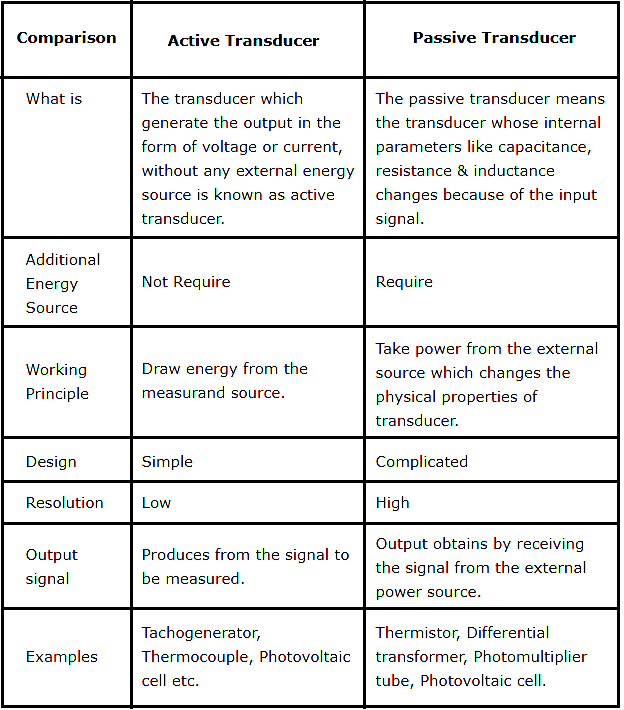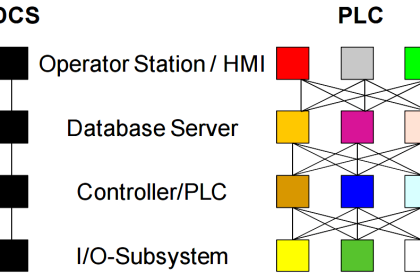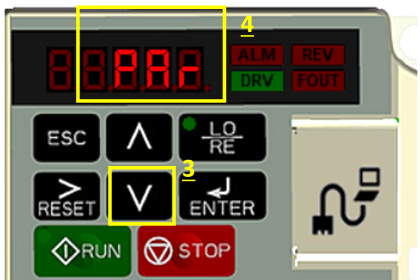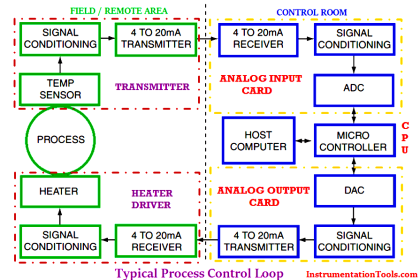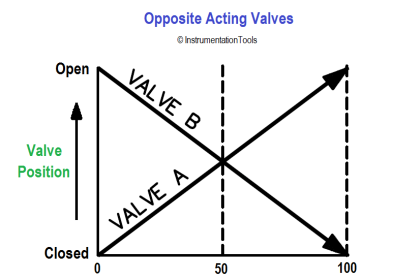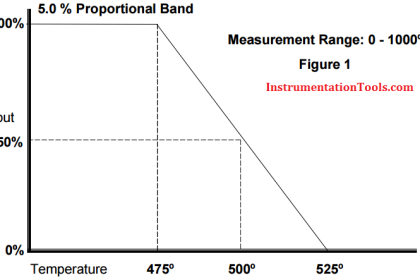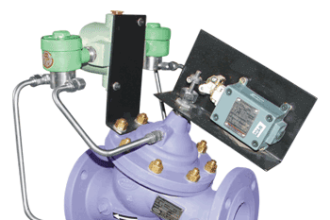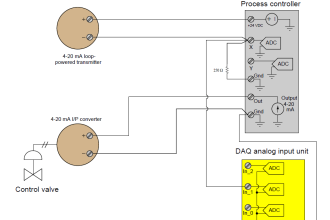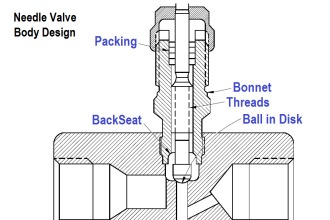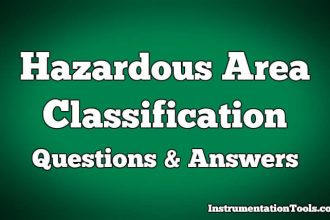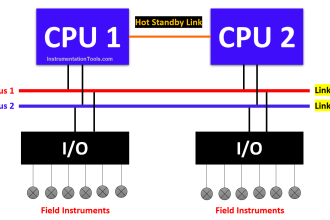Transducers play an important role in the field of instrumentation and control engineering. Any energy in a process should be converted from one form into another form to make the communication from one rectification sector to another.
Transducer
Transducer is a device which converts one form of energy into another form i.e,. the given non-electrical energy is converted into an electrical energy.
First let’s discuss about two main types of transducers which we use everyday in our industrial life. They are
Types of Transducers
There are two types of transducers, they are:
- Active transducers
- Passive transducers
Active transducers
Active transducer is a device which converts the given non-electrical energy into electrical energy by itself. Thermocouple, Photovoltaic cell and more are the best examples of the transducers
Passive transducers
Passive transducer is a device which converts the given non-electrical energy into electrical energy by external force. Resistance strain gauge, Differential Transformer are the examples for the Passive transducers.
Difference Between Active & Passive Transducer 
The classification of transducers are made from the following basis:
1. Based on the physical phenomenon
- Primary transducer
- Secondary transducer
2. Based on the power type Classification
- Active transducer
- Passive transducer
3. Based on the type of output the classification of transducers are made
- Analog transducer
- Digital transducer
4. Based on the electrical phenomenon is a best Classification of Trasnducer
- Resistive transducer
- Capacitive transducer
- Inductive transducer
- Photoelectric transducer
- Photovoltaic transducer
5. Based on the non-electrical phenomenon Classification of transducer
- Linear displacement
- Rotary displacement
6. Based on the transduction phenomenon
- Transducer
- Inverse transducer.
Factor to be considered while Selecting Transducer
- It should have high input impedance and low output impedance, to avoid loading effect.
- It should have good resolution over is entire selected range.
- It must be highly sensitive to desired signal and insensitive to unwanted signal.
- Preferably small in size.
- It should be able to work n corrosive environment.
- It should be able to withstand pressure, shocks, vibrations etc..
- It must have high degree of accuracy and repeatability.
- Selected transducer must be free from errors.
Requirements of a Good Transducers
- Smaller in size and weight.
- High sensitivity.
- Ability to withstand environmental conditions.
- Low cost.
